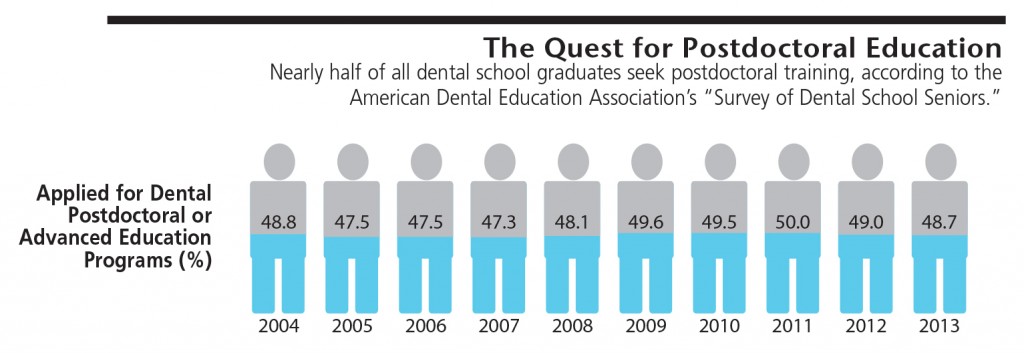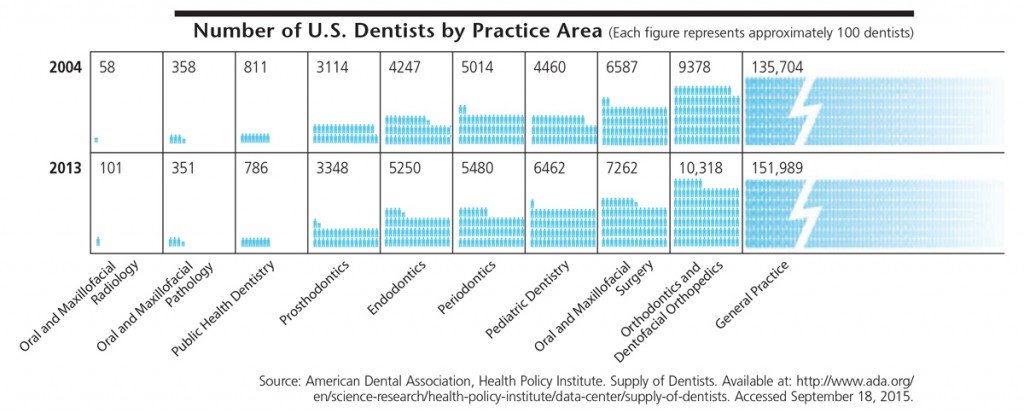Educational Trends in Dentistry
The U.S. Department of Health and Human Services has predicted that by 2025 the demand for oral health care will far exceed the supply of dentists.
The U.S. Department of Health and Human Services has predicted that by 2025 the demand for oral health care will far exceed the supply of dentists.1 But, if that comes to pass, the situation would not be unique. Throughout the decades, the number of practicing dentists has had its ups and downs. In the mid-1980s, for example, the number of U.S. dental school graduates dropped from an all-time high of more than 5500 to fewer than 4000.2
The drop was attributed to a combination of factors, including high tuition and the overriding perception that, due to improvements in oral health care, prevention and widespread fluoridation, there would soon be a declining need for dentists. Mainstream media even suggested that the birth control pill would play a role. The thinking was the pill would reduce the number of children born (thus reducing the need for dental services).3
By the mid-1990s enrollment rates started to climb again. And by 2014 the numbers were back up — to their highest predoctoral enrollment levels yet — to 23,589 students and 5454 graduates.2 This marks an improvement from a slight dip around the time of the Great Recession of 2007–2008. Data also show that the number of senior dental students who applied for postdoctoral or advanced education programs in dentistry between 2004 and 2013 has remained fairly steady, with roughly half of U.S. dental school grads going into specialties or advanced general dentistry programs.4
But even as the numbers of those opting for dental specialties continue to edge upward, the field of general dentistry still boasts the highest number of graduates, though many have gone on to advanced education. This is reflected in the proliferation of general dentists, many of whom now provide multidisciplinary care.
REFERENCES
- U.S. Department of Health and Human Services, Health Resources and Services Administration, National Center for Health Workforce Analysis. National and State-Level Projections of Dentists and Dental Hygienists in the U.S., 2012–2025. Available at: bhpr .hrsa.gov/ healthworkforce/ supply demand/ dentistry/ national state level projections dentists.pdf. Accessed September 18, 2015.
- American Dental Association, Health Policy Institute, Dental Education. Available at: http:// www .ada.org/ en/science-research/health-policyinstitute/ data-center/ dental-education. Accessed September 18, 2015.
- Lewin T, Plagued by Falling Enroll ment, Dental Schools Close or Cut Back. The New York Times. October 29, 1987.
- American Dental Education Association. Survey of Dental School Seniors, 2014 Graduating Class. Available at: http:// www.adea.org/ data/ seniors/. Accessed September 18, 2015.




![The controversy around adding fluoride to drinking water was recently highlighted by an article in the Wall Street Journal, which addressed its possible negative neurological effects on children.[1] The article cited recent studies on what levels of fluoride are needed to protect teeth without risking possible cognitive harm to prenatal children and infants. Link in bio.
[1] Data on link.
---
#dentistry #dentist #dental #smile #dentista #teeth #cosmeticdentistry #dentistryworld #dentalphotography #odonto #tooth #dentistrylife #orthodontics #dentalcare #dentalhygienist #dentalimplants #oralhealth #veneers #dentalstudent #dentalassistant #dentalclinic #dentistlife #dentalhygiene #teethwhitening #oralsurgery #dds #endodontics #continuingeducation #education](https://decisionsindentistry.com/wp-content/plugins/instagram-feed/img/placeholder.png)